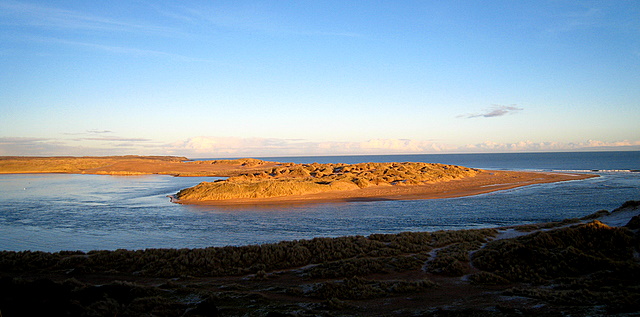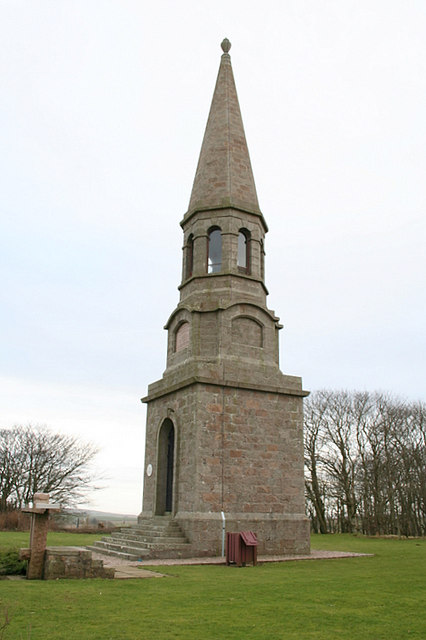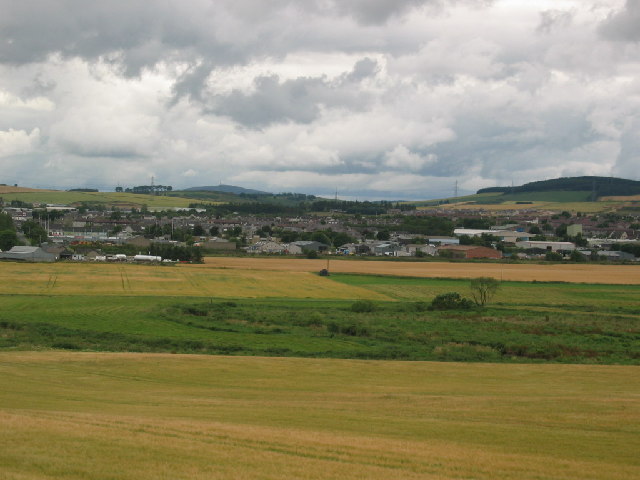|
Methlick
Methlick (Scottish Gaelic language, Gaelic: ''Maothulach'') is a village in the Formartine area of Aberdeenshire, Scotland, situated on the River Ythan north-west of Ellon, Aberdeenshire, Ellon. Services Methlick is served by a parish church, a general store, a garage and hardware store, one hotel and a village hall. There is a primary school, with secondary pupils travelling to Meldrum Academy in Oldmeldrum away. Methlick village also features a recently renovated play park in 2013 providing a range of play equipment for all ages. Transport The village is situated at the intersection of the B9005 road from Ellon, Aberdeenshire, Ellon to Fyvie and the B9170 road from Inverurie to New Deer, both routes crossing the River Ythan at Methlick Bridge. Methlick is served by regular bus services to Aberdeen and less frequent services linking to Ellon, Fyvie and Inverurie. [...More Info...] [...Related Items...] OR: [Wikipedia] [Google] [Baidu] |
Gight
Gight is the name of an estate in the parish of Fyvie in the Formartine area of Aberdeenshire, Scotland, United Kingdom. It is best known as the location of the 16th-century Gight (or Formartine) Castle, ancestral home of Lord Byron. Gight Castle Gight Castle is about miles east of Fyvie, just north of the River Ythan, and mile south of Cottown.Coventry, Martin (1997) ''The Castles of Scotland''. Goblinshead. p.188 The castle was built to an L-shaped plan, probably in the 1570s by George Gordon, the second laird. Ranges of outbuildings were built later. The tower has a vaulted basement, and a turnpike stair at the end of a long passage. There was a hall on the first floor. George Gordon had no children, and the property passed to his brother, James Gordon of Cairnbannoch and Gight. His son Alexander married Agnes Beaton, daughter of David Beaton, Archbishop of St Andrews. Alexander was killed at Dundee in 1579, and his daughter Elizabeth married George Home, 1st ... [...More Info...] [...Related Items...] OR: [Wikipedia] [Google] [Baidu] |
River Ythan
The Ythan is a river in the north-east of Scotland rising at Wells of Ythan near the village of Ythanwells and flowing south-eastwards through the towns of Fyvie, Methlick and Ellon before flowing into the North Sea near Newburgh, in Formartine. The lower reach of the river is known as the Ythan Estuary, is a part of the River Ythan, Sands of Forvie and Meikle Loch Special Protection Area for conservation, particularly the breeding ground of three tern species (common tern, little tern and Sandwich tern) (Lumina, 2004). The River Ythan has a length of and a catchment area of . As figures of the discharge, /s are given or /s. Nitrate Vulnerable Zone The Scottish Government has designated the River Ythan catchment as a Nitrate Vulnerable Zone following concerns about the spread of algal mats in the river during the 1990s. The resulting restrictions on the use of fertilisers in the catchment were criticised by many farmers, 90% of the land in the catchment area is used for agric ... [...More Info...] [...Related Items...] OR: [Wikipedia] [Google] [Baidu] |
Ellon, Aberdeenshire
Ellon ( gd, Eilean) is a town in Aberdeenshire, Scotland, approximately north of Aberdeen, lying on the River Ythan, which has one of the few undeveloped river Ythan Estuary, estuaries on the eastern coast of Scotland. It is in the ancient region of Formartine. Its name is believed to derive from the Gaelic term ''Eilean'', an island, on account of the presence of an island in the River Ythan, which offered a convenient fording point. In 1707 it was made a burgh of barony for the Earl of Buchan. Places of interest Places of interest within the town include Ellon Castle Gardens, recently brought back to life by volunteers and open to the public (see website for latest opening times). They include a walled garden of historical importance, yew trees dating back 500 years and the ruins of old Ellon Castle, and the surrounding walls known as the ''Deer Dyke''. Ellon also has ''Auld Brig'', a category A listed bridge across the Ythan, built in 1793 and still in use as a pedestria ... [...More Info...] [...Related Items...] OR: [Wikipedia] [Google] [Baidu] |
Banff And Buchan (UK Parliament Constituency)
Banff and Buchan is a constituency of the House of Commons, located in the north-east of Scotland within the Aberdeenshire council area. It elects one Member of Parliament at least once every five years using the first-past-the-post system of voting. The seat has been held by David Duguid of the Scottish Conservatives since 2017; until then the Scottish National Party (SNP) had held the seat since 1987, with the then First Minister of Scotland Alex Salmond representing the seat until 2010 and Eilidh Whiteford until 2017. Constituency profile A mostly rural constituency, it takes in the towns of Fraserburgh, Peterhead and Turriff, and the main industries are fishing and tourism. The Aberdeenshire council area as a whole voted against Scottish independence in 2014. 61% of people in constituency are estimated to have voted in favour of leaving the European Union in the 2016 Brexit referendum. In 2010, Eilidh Whiteford succeeded Alex Salmond as the MP for Banff and Buchan ... [...More Info...] [...Related Items...] OR: [Wikipedia] [Google] [Baidu] |
Aberdeenshire
Aberdeenshire ( sco, Aiberdeenshire; gd, Siorrachd Obar Dheathain) is one of the 32 Subdivisions of Scotland#council areas of Scotland, council areas of Scotland. It takes its name from the County of Aberdeen which has substantially different boundaries. The Aberdeenshire Council area includes all of the area of the Counties of Scotland, historic counties of Aberdeenshire and Kincardineshire (except the area making up the City of Aberdeen), as well as part of Banffshire. The county boundaries are officially used for a few purposes, namely land registration and Lieutenancy areas of Scotland, lieutenancy. Aberdeenshire Council is headquartered at Woodhill House, in Aberdeen, making it the only Scottish council whose headquarters are located outside its jurisdiction. Aberdeen itself forms a different council area (Aberdeen City). Aberdeenshire borders onto Angus, Scotland, Angus and Perth and Kinross to the south, Highland (council area), Highland and Moray to the west and Aber ... [...More Info...] [...Related Items...] OR: [Wikipedia] [Google] [Baidu] |
New Deer
New Deer ( gd, Achadh Reite) is a settlement in Aberdeenshire, North East Scotland, which lies in the valley of Deer. It is located at the junction of several roads crossing through the Howe of Buchan. It was founded after monks from Deer Abbey, Old Deer, built a chapel at Auchreddie, which translates as "field of the bog myrtle", and lies clustered on both sides of the slope of a tributary of South Ugie Water. Around 1507 the register of Deer Abbey lists its lands in the "new paroche of Deir". The name Auchreddie has dropped in significance over the years; however, the southern end of the village is still known by this name. In 1805, New Deer was extended to the north by the third James Ferguson of Pitfour (1735–1820), the elder brother of Patrick Ferguson. Also involved were the Gordons of Cairnbanno, who were seeking to improve the old community of Auchreddie. Attractions Churches There are three churches in the village, only one of which (St Kane's) still functions as a ... [...More Info...] [...Related Items...] OR: [Wikipedia] [Google] [Baidu] |
Cricket
Cricket is a bat-and-ball game played between two teams of eleven players on a field at the centre of which is a pitch with a wicket at each end, each comprising two bails balanced on three stumps. The batting side scores runs by striking the ball bowled at one of the wickets with the bat and then running between the wickets, while the bowling and fielding side tries to prevent this (by preventing the ball from leaving the field, and getting the ball to either wicket) and dismiss each batter (so they are "out"). Means of dismissal include being bowled, when the ball hits the stumps and dislodges the bails, and by the fielding side either catching the ball after it is hit by the bat, but before it hits the ground, or hitting a wicket with the ball before a batter can cross the crease in front of the wicket. When ten batters have been dismissed, the innings ends and the teams swap roles. The game is adjudicated by two umpires, aided by a third umpire and match referee ... [...More Info...] [...Related Items...] OR: [Wikipedia] [Google] [Baidu] |
Lord Byron
George Gordon Byron, 6th Baron Byron (22 January 1788 – 19 April 1824), known simply as Lord Byron, was an English romantic poet and Peerage of the United Kingdom, peer. He was one of the leading figures of the Romantic movement, and has been regarded as among the greatest of English poets. Among his best-known works are the lengthy Narrative poem, narratives ''Don Juan (poem), Don Juan'' and ''Childe Harold's Pilgrimage''; many of his shorter lyrics in ''Hebrew Melodies'' also became popular. Byron was educated at Trinity College, Cambridge, later traveling extensively across Europe to places such as Italy, where he lived for seven years in Venice, Ravenna, and Pisa after he was forced to flee England due to lynching threats. During his stay in Italy, he frequently visited his friend and fellow poet Percy Bysshe Shelley. Later in life Byron joined the Greek War of Independence fighting the Ottoman Empire and died leading a campaign during that war, for which Greeks rev ... [...More Info...] [...Related Items...] OR: [Wikipedia] [Google] [Baidu] |
Haddo House
Haddo House is a Scottish stately home located near Tarves in Aberdeenshire, approximately north of Aberdeen (). It has been owned by the National Trust for Scotland since 1979. The Gordons, who later became the Earls of Aberdeen and Marquesses of Aberdeen, have lived on the site for over 500 years.National Trust for Scotland Haddo House sits in or near the site of the old Kellie Castle, the family's previous dwelling which was burnt down by the Covenanters and dates from 1732; it was designed by William Adam in the Georgian |
Aberdeen
Aberdeen (; sco, Aiberdeen ; gd, Obar Dheathain ; la, Aberdonia) is a city in North East Scotland, and is the third most populous city in the country. Aberdeen is one of Scotland's 32 local government council areas (as Aberdeen City), and has a population estimate of for the city of Aberdeen, and for the local council area making it the United Kingdom's 39th most populous built-up area. The city is northeast of Edinburgh and north of London, and is the northernmost major city in the United Kingdom. Aberdeen has a long, sandy coastline and features an oceanic climate, with cool summers and mild, rainy winters. During the mid-18th to mid-20th centuries, Aberdeen's buildings incorporated locally quarried grey granite, which may sparkle like silver because of its high mica content. Since the discovery of North Sea oil in 1969, Aberdeen has been known as the offshore oil capital of Europe. Based upon the discovery of prehistoric villages around the mouths of the rivers ... [...More Info...] [...Related Items...] OR: [Wikipedia] [Google] [Baidu] |
Fyvie
Fyvie is a village in the Formartine area of Aberdeenshire, Scotland. Geography Fyvie lies alongside the River Ythan and is on the A947 road. Architecture What in 1990, at least, was a Clydesdale Bank was built in 1866 by James Matthews. The Tudor-style Old Wood Cottage, meanwhile, dates to 1824. Climate Fyvie has an oceanic climate (Köppen: ''Cfb''). The nearest weather station to Fyvie is located at Fyvie Castle, which is north of the village, and is above sea level. St Mary's Priory Now demolished, the priory was a cell of Arbroath Abbey, its location marked by a cross, made in 1868 of Corrennie granite. The priory was founded by Reginald de Cheyne around 1285. Being a small foundation, the prior doubled as parish vicar, responsible to the Abbot of Arbroath, who in 1325 wrote to warn the prior about the behaviour of his young monks. Fyvie Castle Fyvie Castle is reputed to have been built by King William the Lion in the early 13th century. It was the site of an ... [...More Info...] [...Related Items...] OR: [Wikipedia] [Google] [Baidu] |
Inverurie
Inverurie (Scottish Gaelic: ''Inbhir Uraidh'' or ''Inbhir Uaraidh'', 'mouth of the River Ury') is a town in Aberdeenshire, Scotland at the confluence of the rivers Ury and Don, about north-west of Aberdeen. Geography Inverurie is in the valley of the River Don at the centre of Aberdeenshire and is known locally as the Heart of the Garioch. It sits between the River Don and the River Ury and is only from the imposing hill of Bennachie. The town centre is triangular and is dominated by Inverurie Town Hall built in 1863. In the middle of the 'square' (as it is known locally) is the Inverurie and District War Memorial, capped by a lone Gordon Highlander looking out over the town. The main shopping areas include the Market Place and West High Street which branches off from the centre towards the more residential part of the town. South of the River Don is the village of Port Elphinstone, which is part of the Royal Burgh of Inverurie and is so called due to the proximity of the ... [...More Info...] [...Related Items...] OR: [Wikipedia] [Google] [Baidu] |










